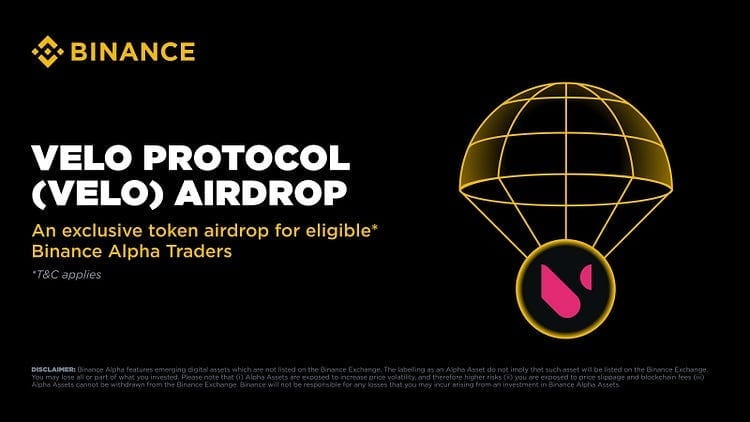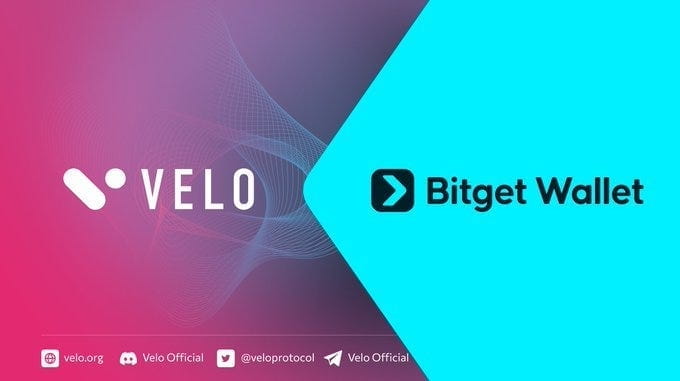
As Bitcoin breaks through $120,000 and Ethereum stabilizes above $3,000, market trading sentiment continues to heat up, and the practical value of decentralized financial infrastructure has become the focus of capital. In this round of bull market, Velo Protocol @veloprotocol is becoming a key node connecting emerging users in Asia with the multi-chain DeFi ecosystem through strategic product iterations and ecological layouts. Its deep integration with Bitget Wallet, hybrid perpetual contract exchanges, and on-chain practices of real-world assets (RWA) have constructed a three-dimensional network that combines traffic access, trading scenarios, and asset expansion capabilities.
Traffic access: Bitget Wallet integration and outreach to Asian users
Velo's recent integration with Bitget Wallet is a crucial step in its expansion in the Asian market. As a leading wallet with over 20 million users, the integration of Bitget Wallet allows DeFi products and perpetual contract trading within the Velo ecosystem to be accessed directly through the wallet interface. This seamless connection significantly lowers the entry threshold for users— for example, on the Universe hybrid Perp DEX, users can execute fast trades without Gas fees through Bitget Wallet, supporting a multi-chain environment of NovaChain, BSC, and Solana.

The direct effect of this cooperation is reflected in user incentives. The 'Fomo Thursdays' event launched by Bitget Wallet allows users to earn VELO token rewards by staking USDT, converting wallet traffic into actual users of the protocol. Data shows that after the integration, Velo's daily trading volume has exceeded $250 million, reflecting strong market demand for convenient multi-chain trading tools.
From a deeper perspective, this cooperation highlights Velo's positioning: not to create an isolated public chain, but to become an intermediary layer connecting wallets, exchanges, and users. The extensive coverage of Bitget Wallet in Southeast Asia, combined with the local resources of Velo's strategic investors (such as Thailand's Charoen Pokphand Group and Singapore's UOB Venture), synergizes to provide the protocol with dual access capabilities to traditional finance and the crypto market.
Multi-chain engine: Technical adaptability of Universe DEX and NovaChain
The core product of the Velo ecosystem, the Universe hybrid Perp DEX, is essentially a cross-chain liquidity aggregator. Its technical advantage lies in simultaneously supporting order book and AMM models, achieving low-latency settlements on NovaChain, BSC, and Solana. As Velo's EVM-compatible underlying chain, NovaChain handles cross-chain communication and fee optimization, reducing asset transfer costs across different chains by over 60% (according to official testnet data).
This multi-chain design directly addresses the current market pain points. When Ethereum mainnet Gas fees soar during a bull market, users can quickly switch to BSC or Solana chains to complete transactions; NovaChain's customized settlement layer provides compliance support for enterprise applications (such as PAYFAI cross-border payments). Data shows that Velo's trading proportion on the Solana chain has increased by 37% in the past three months, indicating that the multi-chain strategy effectively captures liquidity demands across different chains.
It is worth noting that the Gas-free transactions of Universe DEX do not rely solely on subsidies, but rather convert transaction fees into VELO token staking rewards through pre-compiled contracts. This mechanism enhances token utility while avoiding the fragmentation of user experience often seen in traditional Layer 2 solutions.
RWA and stablecoins: From gold tokenization to institutional liquidity access
Velo's layout in the real-world asset (RWA) sector is key to distinguishing it from pure DeFi protocols. Through projects like PLG Gold, which tokenizes gold, Velo brings physical assets on-chain and utilizes the PAYFAI settlement layer for foreign exchange and merchant payments. Reports from BlockTelegraph show that PAYFAI's AI-driven routing system can optimize cross-border settlement paths, compressing traditional bank processing times from 3-5 days to minutes.
This capability is highly aligned with the demands of the Asian market. For example, in Southeast Asia, remittance service providers like iRemit in the Philippines have connected to the Velo network to provide cross-border transfers based on stablecoins for overseas workers. The Orbit white-label wallet solution allows enterprises to customize digital asset management systems that comply with regulatory requirements, such as integrating KYB/KYC identity verification frameworks.
In terms of stablecoins, Velo's aggregator functionality supports automatic exchanges between USDT, USDC, and localized stablecoins (such as Thai baht-pegged tokens). This liquidity pool design serves not only retail users but also provides institutional investors with a compliant channel to enter the cryptocurrency market. According to Messari's Q1 2025 report, Velo's RWA-related trading volume has grown by 210% quarter-on-quarter, becoming the most growth-potential sector in its ecosystem.
Token economy and long-term value capture
$VELO The functional design of the token closely revolves around ecological needs. In addition to regular governance staking, it serves as a fee deduction tool in the PAYFAI settlement layer, as liquidity incentives in Universe DEX, and acts as a staking certificate for identity verification in the Orbit wallet ecosystem. This multi-scenario consumption mechanism reduces selling pressure in circulation—currently, about 41% of the circulating supply is locked in various protocol contracts (according to PeckShield audit data).
From an investment perspective, Velo's value support comes from three aspects: first, the user growth dividend brought by traffic access points like Bitget Wallet; second, the explosive demand that may arise in the RWA sector in the later stages of the bull market; and third, its compliance structure's attractiveness to traditional financial institutions. The launch of Binance Alpha further enhances the liquidity depth of the tokens, while the participation of market makers like DWF Labs provides a buffer for price stability.
While most projects in the market are still chasing single-chain ecosystems or short-term speculative narratives, Velo Protocol has built an ecosystem with actual cash flow capabilities by integrating wallet access, optimizing multi-chain experiences, and deeply cultivating RWA applications. The wave of cryptocurrency adoption in the Asian market, the demand from institutions for on-chain real-world assets, and the continuous iteration of DeFi products will become the three driving forces for its subsequent development. In the new cycle after Bitcoin's halving, protocols that possess both technical adaptability and commercial viability may be more likely to navigate market fluctuations and capture true long-term value.
#Velo #BitgetWallet #BinanceAlpha $VELO



